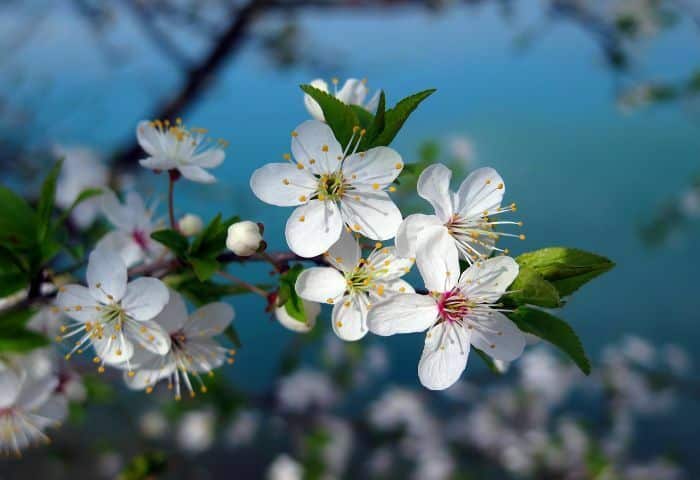Planting a cherry tree (Prunusspp.) from seed or pit is not so easy, but this is not the biggest problem, because if you want to have a tree that produces cherries, there are complications with pollination and meeting winter cold requirements. Your best option may be to plant cherry seeds from a locally grown tree or one you bought at a local fruit stand. Cherries sold in supermarkets can come from a tree that is not compatible with the climate of your region, so avoid using those imported cherry seeds.
Cherry pits are covered by a hard shell that surrounds the seed. Do not attempt to remove the shell to extract the seed, stratify and sow it. The embryo of a new cherry tree matures within the pit during winter dormancy, which requires a cooling period called stratification. To plant trees from seed, you must have the cherry pit outdoors in cold weather or indoors in a refrigerator before starting. As we know you like a challenge, see how to plant a holly tree a tree that will live for centuries and can measure 20m.
How to use cherry pits to plant a cherry tree
You can plant cherry trees at home using locally grown cherry pits, but fruit production will take longer with this process than buying a seedling. Remember to follow our advice to find the right seed for the climate of your region, once you have it, follow the steps explained below.

- Prepare the bones. Save a handful of locally grown cherry pits. Soak them in a bowl of warm water for a few minutes to loosen the remaining fruit. Remove and clean them. Continue, placing the bones on paper towels for about a week to allow them to dry completely. Transfer to an airtight container and store in the refrigerator for 10 weeks.
- Plant your seeds indoors. Remove the container from the refrigerator and allow it to reach room temperature before planting two or three bones in a pot with well-draining soil inside. Water constantly to keep the soil moist.
- Get ready to transplant. When seedlings appear, remove all but the strongest of the group, and when the soil has warmed in early spring, transplant to their permanent outdoor location.
- Be patient. Trees planted from cherry pits take seven to 10 years to bear fruit.
Special recommendations for planting cherries
Cherries need ample space, good air circulation and adequate moisture maintenance to thrive. However, individual climatic requirements may vary according to cherry varieties. To plant your tree, follow the tips described below.
- Choose the best site. Cherry trees need full sun, good air circulation and space, about 9 to 12 meters between trees is most appropriate.
- Prepare the planting or transplanting site. Light, sandy soil types with good depth are best. Heavier soils with a tendency to waterlog put cherry trees at risk of root rot.
- Water is key. Note that after planting your cherry tree, you should water it every other day for the first week, two or three times during the second week, then continue to water the tree weekly for the rest of the first growing season.